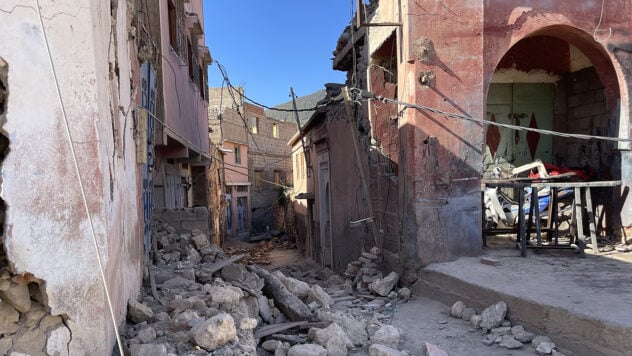
The number of victims of the powerful earthquake in Morocco continues to grow and has already exceeded 2.4 thousand people. The search and rescue operation in the country continues.
According to state media, as of 10:00 a.m. local time, at least 2,497 people have been confirmed dead.
< p>Another 2,476 people were injured. Such data was released by the Ministry of Internal Affairs of Morocco.
Now watching
The number of victims may increase when rescue teams reach remote villages in the Atlas Mountains. The destruction of roads is preventing Moroccan authorities from sending aid to some of the country's hardest-hit regions.
– Rescue efforts continue to reach the most affected areas. The earthquake struck mountainous areas that are geographically scattered and in some cases difficult to reach, — The Moroccan government told CNN.
Authorities are using helicopters to reach the victims and equipment to clear debris from roads, and are setting up field hospitals to deliver the wounded.
The international community offered Morocco assistance to rescue those who might still be alive under the rubble three days after the earthquake.
Moroccan authorities said they “have responded positively” to proposals from search and rescue teams from Spain, Qatar, Great Britain and the United Arab Emirates. At the same time, they have still not accepted offers from other states, despite the urgency of the disaster.
Turkey and France, for example, have made offers of assistance. They are awaiting an official request from the Moroccan authorities.
Morocco's King Mohammed VI thanked other countries during an earthquake relief meeting. At the same time, it was noted that “the Moroccan authorities have carried out an accurate assessment of the needs on the ground, taking into account the fact that lack of coordination in such situations could be counterproductive”.
The Spanish Ministry of Defense announced that has already sent 86 rescuers with search dogs. And a plane with humanitarian aid took off from Qatar.
Catastrophic destruction
The magnitude 6.8 earthquake was Morocco's deadliest in more than six decades, since powerful tremors devastated the city of Agadir in 1960, killing more than 12,000 people.
The epicenter of the tremors in Friday, September 8, was the High Atlas mountain range, part of the Atlas Mountains.
The epicenter was located approximately 72 km southwest of the ancient city of Marrakech, which suffered destruction.
Small settlements in Al-Hauz province, located closer to the epicenter of the earthquake, were most affected. The footage shows that the mud brick houses common in Morocco are completely destroyed.
These bricks are made from clay and sand, and such houses are unstable.
“The situation is catastrophic, many houses have completely collapsed. Since these were buildings made primarily of mud brick, they buried people underneath them when they collapsed, which also makes it difficult to find them alive. There are many dead, but it is very difficult to estimate their number, — noted social activist Omar Saadoun in a comment to journalists.
According to him, residents of isolated villages in the Atlas Mountains depend on supplies of water and food. They have problems with power supply and telephone communications.
As The Guardian notes, the earthquake wiped out entire villages in the mountains. There, local residents and military personnel continue to search for survivors and bodies of the dead.
As Mehrdad Sasani, a professor of civil and environmental engineering at Northeastern University (USA), explained to reporters, cheaper mud brick buildings predominate in Moroccan villages. And this increases the risk of death in an earthquake.
– These types of structures are very fragile. This means that they do not have the flexibility and mobility necessary during an earthquake, and therefore can collapse, — Sasani noted.
In addition, the clay material used for the houses increased the risk of suffocation for residents trapped under the rubble. After all, after the collapse of houses, there are no “air pockets” that could allow survivors to continue to breathe.
According to the World Health Organization, at least 300 thousand people were affected by the tremors in Marrakech and nearby regions. people.
The earthquake damaged the historic walls surrounding Marrakech's historic city quarter, the Medina. They were founded at the beginning of the 12th century. This ancient district of Marrakech is a UNESCO World Heritage Site.

